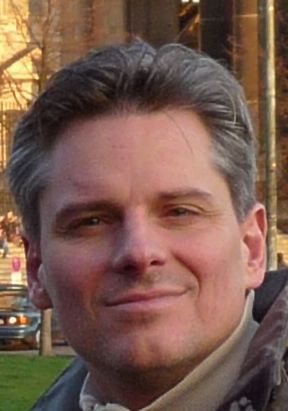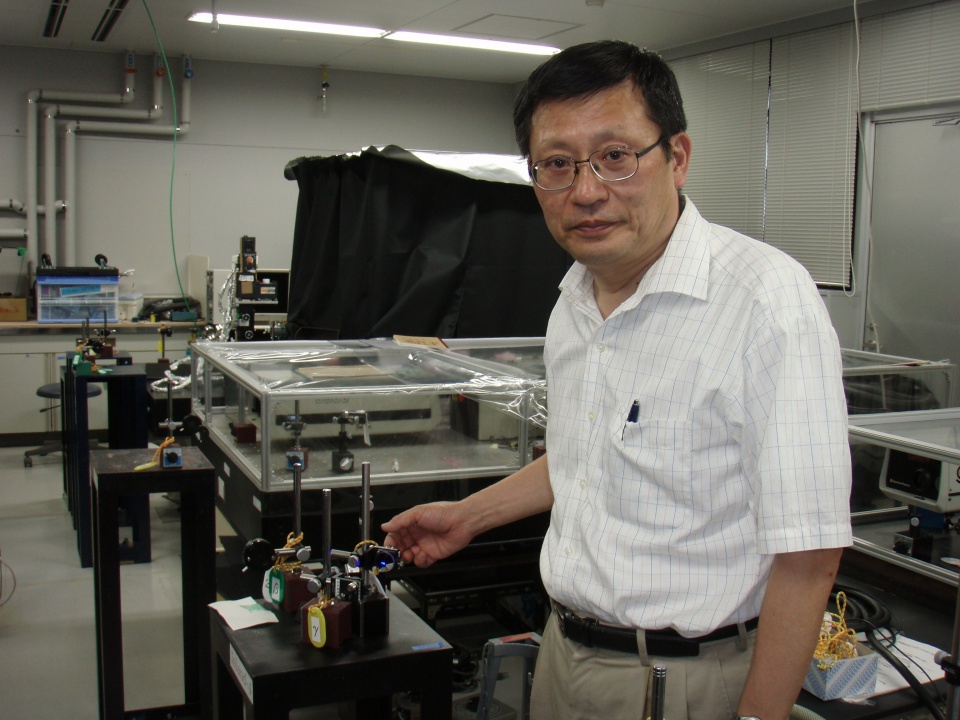Lecturers
 |
Professor, LMU Munich
Dieter Braun is an associate professor in the Department of Physics at the Ludwig Maximilians University of Munich. He received a Diploma and PhD in Physics, working with Peter Fromherz at the MPI for Biochemistry. After working as DFG Scholar at Rockefeller University with Albert Libchaber, he led his own Emmy Noether group on biomolecule thermophoresis and thermal trapping in Munich, leading to the award winning Startup company NanoTemper (50 employees) founded by two of his first PhD students. The company uses thermophoresis to quantify biomolecule binding in complex liquids. He has received the Schloessmann Award in Optical Methods in Modern Biology and recently the Klung-Wilhelmy Weberbank prize, Germany's highest paying biannual award for physicists younger than 40. |
 |
Managing Director, GNA Biosolutions GmbH, Germany
Federico is one of the founders of GNA Biosolutions GmbH, a spin-off company from Ludwigs-Maximilians-University Munich/Germany. He holds the post of Managing Director with the primary responsibilities for GNA’s finances as well as technology-wise for the optoelectronic and software development. Federico started his entrepreneurial career in high-school and thus gained many years of business planning experience. Federico began his undergraduate studies of physics at the University of Münster/Germany, and then enrolled at the Universitiy of Würzburg/Germany and the University of Texas at Austin/US, where he earned his Master’s degree in physics. During his entire studies Federico was a fellow of the German National Academic Foundation (Studienstiftung). Afterwards, Federico moved to Munich/Germany where he worked in the Center for Nanoscience and obtained his PhD in physics from the University of Munich in 2008. He is author and co-author of 6 international patent families on optical heating of nanoparticles for DNA detection. |
 |
Professor, University of Science and Technology of China
Dr. Zhenchao Dong is currently a full professor at Hefei National Laboratory for Physical Sciences at the Microscale (HFNL), University of Science and Technology of China (USTC). His research interest is in the field of single-molecule optoelectronics and nanoplasmonics, particularly on scanning tunneling microscopy (STM) based single-molecule electroluminescence and single-molecule Raman scattering. The aim of his research is to understand the underlying physics that governs the optoelectronic behavior of single molecules at the nanoscale, particularly on the light generation and energy transfer in a plasmonic nano-environment. Dong is currently the PI of several research projects supported by the MoST, NSFC, and CAS. He has published more than 120 papers indexed by SCI (H-factor=27), including 8 first-author or corresponding-author papers in Nature, Nature Photonics, Phys. Rev. Lett., J. Am. Chem. Soc., and Angew. Chem. He has presented many invited talks in prestigious international conferences, including APS, ACS, IVC, ICN+T, NFO, etc. He is the recipient of "National Outstanding Scientific and Technological Workers Award" from CAST in 2010 and a couple of other awards and honors in 2013, including "the CAIA Outstanding Award", "USTC President Award for Outstanding Research Achievements", and "Top 10 Advances in Science and Technology of China".
|
 |
Professor, National Chiao Tung University
Hiro-o Hamaguchi received his D. Sc. Degree in physical chemistry from the University of Tokyo in 1975. From 1997 till 2012, he was a Professor of Chemistry at the University of Tokyo. He is now a Chair Professor at National Chiao Tung University, Taiwan. His recent research efforts are directed toward complicated molecular systems including solutions and liquids, ionic liquids, and also living cells and human organs, with the use of time- and space-resolved Raman spectroscopy. He is the author of 270 scientific papers. He received Meggers Award (2005), the Spectroscopical Society of Japan Award (2006), Chemical Society of Japan Award (2009) and TRVS Award (2009) and Medal with Purple Ribbon (2012). His hobby is associating with nature, currently, in particular, collecting Taiwanese stag beetles.
|
 |
Ikerbasque Research Professor and Group Leader, CIC nanoGUNE
Rainer Hillenbrand is Ikerbasque Research Professor and Nanooptics Group Leader at the nanoscience research center CIC nanoGUNE in San Sebastian (Basque Country, Spain), and a Joint Professor at the University of the Basque Country. He is co-founder of the company Neaspec GmbH (Martinsried, Germany), which develops and manufactures near-field optical microscopes. From 1998 to 2007 he worked at the Max-Planck-Institut for Biochemistry (Martinsried, Germany), where he led the Nano-Photonics Research Group from 2003 to 2007. He obtained his PhD degree in physics from the Technical University of Munich in 2001. Hillenbrand’s research activities include the development of optical near-field nanoscopy and infrared nanospectroscopy, and its applications in nanophotonics, graphene plasmonics, materials sciences and biology.
|
 |
Associate Professor, The University of Tokyo
Yusuke Kajihara received the B.E., M.E., and Ph.D. degrees in precision engineering in 2001, 2003, and 2007, respectively, from the University of Tokyo. He spent 4 and half years as a Japan Science and Technology (JST) postdoctoral researcher at the University of Tokyo (the group of Prof. Susumu Komiyama). Since 2012, he has been a faculty member at Institute of Industrial Science, the University of Tokyo. He was a visiting researcher at Max-Planck Institute in 2011 (the group of Dr. Fritz Keilmann). His research interests include terahertz microscopy and nanoscale manufacturing. |
 |
Professor, Department of Electrical Engineering, Nagoya University
(Visiting principal researcher in RIKEN Sendai)
Kodo Kawase received B.S. degree in electronic engineering from Kyoto University in 1989, and Ph. D degree in electronic engineering from Tohoku University in 1996. He became an Initiative Researcher at RIKEN in 2001. He became a Professor of Graduate School of Engineering, Nagoya University in 2005. He received the 1997 Young Scientist Award from the JSAP, the 1998 Excellent Presentation Award, the 2000 and 2006 Prize of Laser Engineering from the Laser Society of Japan, the 2002 Marubun research and encouragement award and 2006 Marubun Special Research Award by the Marubun Research Promotion Foundation (MRPF), the 2005 Young Scientists’ Prize by the Commendation for Science and Technology by the Minister of Education, Culture, Science and Technology (MEXT). He has been conducting research activities in several directions within the THz field. He developed several types of widely tunalbe THz sources using nonlinear optical effects, and suggested a whole range of real-life applications.
|
 |
Senior Researcher, Ludwig-Maximilians-Universität, München, Germany
Fritz Keilmann (born 1942) studied meteorology and physics in München and received a Dr. rer. nat. for research on infrared plasma diagnostics. As postdoc of Ali Javan at MIT he developed antenna-based harmonic mixing and high-power THz lasers. He has been a staff researcher of the Max-Planck Society from 1973 to 2012: Initally at the MPI für Festkörperforschung Stuttgart, he pioneered far-infrared nonlinear optics and spectroscopy of solids, and investigated phonon physics, microwave biological effects, carrier dynamics of semiconductors, far-infrared ellipsometry of superconductors, and cyclotron pumping of quantum-Hall edge states.
In 1995 he relocated to the MPI für Biochemie Martinsried where he pioneered infrared scattering near-field microscopy, and also coherent Fourier-transform infrared spectroscopy using frequency-comb beams. From 2007 - 2012 he was with the MPI für Quantenoptik Garching, in the DFG Cluster "Munich-Centre for Advanced Photonics", developing broad-band infrared spectroscopic near-field microscopy. He has been a guest researcher at UC Santa Barbara and UC San Diego. He has been awarded the Kenneth J. Button prize 2009.
He is presently a Scientific Advisor to Neaspec GmbH, producer of near-field infrared microscopes, and a Senior Researcher at LMU München investigating soft matter and biological nanocomposites.
|
 |
Professor, Universität Leipzig
Klaus Kroy is a theoretical physicist working in the field of soft and biological matter or `soft mesoscopics’. Some of his interests are aeolian sand transport, non-equilibrium dynamics of hot nanoparticles, proteins and stiff polymers, and the inelastic mechanics of the cytoskeleton. He received his PhD from the Technical University of Munich in 1998. Since 2004 he is a professor at the University of Leipzig, Germany. He has also previously worked at the ESPCI Paris (France), the University of Edinburgh (UK), and the Hahn-Meitner Institute Berlin (Germany).
|
|
Group leader, LMU Munich
Theo Lohmüller studied Chemistry and Biology at the University of Erlangen-Nürnberg and the University of Würzburg, Germany. In 2004 he joined the group of Prof. Joachim P. Spatz at the Heidelberg University and the Max-Planck Institute for Intelligent Systems in Stuttgart (formerly Metals Research). In 2008 he was awarded his doctoral degree in Chemistry for his work on “Nanostructured Functional Materials”. After working as a Research Scientist for BASF at the Global Research Center in Singapore he joined the group of Prof. Jay T. Groves as a DFG PostDoc Fellow at UC Berkeley and the Lawrence Berkeley National Laboratory, Materials Sciences Division in 2009. In April 2011 he returned to Germany to join the chair of Prof. Jochen Feldmann at the Physics Department at LMU Munich as a group leader. In 2011 he became an extraordinary member of the Center of Nanoscience (CeNS) at the LMU Munich and since 2014 he is a principal investigator within the Nanosystems Initiative Munich (NIM).
|
|
 |
Professor, Picobiology Institute, Graduate School of Life Science, University of Hyogo
[Education history]
1981 Graduated from College of Arts and Natural Sciences, The University of Tokyo
1983 Graduated from Graduate School of Medical Science, Osaka University
[Work history]
1986 JSPS fellow
1986 Assistant Professor, Institute for Molecular Science, Okazaki National Research Institutes
1998 Associate Professor, Graduate School of Arts and Sciences, The University of Tokyo
2003 Professor, Graduate School of Science, Himeji Institute of Technology
2004 – Present Professor, Graduate School of Life Science, University of Hyogo
[Other history]
1987 Obtained D. Sci. degree from The University of Tokyo
2011 Chairman, Organizing Committee, The 49th
2011 – Present Director, Picobiology Institute, Graduate School of Life Science, University of Hyogo
2013 – Present Visiting Scientist, RIKEN
|
 |
Professor, Tohoku University
He is currently a Professor at Department of Mechanical Systems and Design in Tohoku University. He received the D.E. degree in mechatronics and precision engineering from Tohoku University in 1996. During 1996–2001, he has been a Research Associate in the Department of Mechatronics and Precision Engineering, Tohoku University. During 2001-2009, he has been an Associate Professor. From 2009, He is a Professor at Department of Mechanical Systems and Design in Tohoku University. Professor Ono's expertise is in the area of nanoelectromechanical systems (NEMSs), silicon based nanofabrication, ultrasensitive sensing based on resonating devices, scanning probe technologies, nanoprobe sensing for nanoscale science and engineering, and hetero-integration of LSI-MEMS. Currently, he is project reader of “Microsystem Integration Research Initiative in Tohoku University, which is the project to develop LSI-MEMSs. |
 |
Kohki Okabe
Assistant Professor, Graduate School of Pharmaceutical Sciences, University of Tokyo; JST, PRESTO
Kohki Okabe received a B.S. from University of Tokyo in 2002, and his Ph.D. from University of Tokyo in 2007 (Prof. Takashi Funatsu's lab). Then, Kohki joined Dr Yoshie Harada's lab in the Tokyo Metropolitan Institute of Medical Science, where he started his project on intracellular thermometry. In 2008, he became Assistant Professor at Graduate School of Pharmaceutical Sciences, University of Tokyo. He is now also the PRESTO researcher of JST (project: Design and Control of Cellular Functions).
Kohki has made major contributions to the emergence of the field of intracellular thermometry and its application to cell biology. His team also pioneered the development of quantitative imaging of intracellular mRNA.
His honors include Early Research in Biophysics Award (Biophysical Society of Japan) and Young Researcher's Award (Bioimaging Society of Japan).
|
 |
Principal Investigator, Principal Investigator, Waseda Biosciences Research Institute in Singapore (WABIOS), Waseda University
Dr. Suzuki is an associate professor of Waseda University in Tokyo, Japan. He got a PhD on biophysics from Waseda University in 2005 and he also received MBA in Technology Management in 2008. Since 2009, he has been working in Waseda Bioscience Research Institute in Singapore (WABIOS) locating in Biopolis in Singapore as a principal investigator of Physical Biology Group. His research interests include the structural and functional reconstruction and molecular mechanism of muscle contractile system, and force measurement and functional analysis of molecular motors. |



